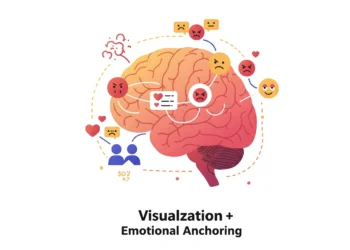“Knowing yourself is the beginning of all wisdom.” – Aristotle’s timeless words remind us that growth starts with honest introspection. In a world where emotional intelligence defines success, understanding your thoughts, values, and reactions isn’t just helpful – it’s revolutionary.
Research by psychologist Tasha Eurich reveals that only 10-15% of people truly understand their behaviors. This gap holds many back from reaching their potential. But what if you could recognize emotions, strengths, and blind spots with clarity? Tools like journaling, mindfulness, and structured feedback create a roadmap for this journey.
Instead of asking “Why do I feel this way?”, Eurich suggests focusing on “What” questions: “What triggers my stress?” or “What patterns hold me back?” This shift – paired with daily reflection – builds emotional agility. Leaders who adopt these practices often see improved decision-making and team dynamics.
This article blends science-backed strategies with real-world coaching methods. You’ll learn step-by-step techniques to assess your habits, leverage feedback, and align actions with core values. Whether you’re refining leadership skills or seeking personal growth, these insights will help you become better equipped to navigate challenges.
Key Takeaways
- Self-awareness is foundational for emotional intelligence and leadership success.
- Asking “What” questions fosters actionable growth over unproductive self-analysis.
- Journaling and feedback sessions provide tangible data for behavioral insights.
- Coaching frameworks accelerate skill development in professional settings.
- Regular reflection helps align daily choices with long-term goals.
Understanding the Fundamentals of Self-Awareness
Neuroscience reveals why self-awareness shapes how we interact with the world. At its core, it’s a dance between two brain regions: the amygdala (emotional responses) and the prefrontal cortex (rational thinking). When these areas sync, people gain control over reactions – a skill critical for leadership and relationships.

The Science Behind Self-Awareness and Emotional Intelligence
Daniel Goleman, author of Emotional Intelligence, states: “Self-awareness is the keystone of emotional intelligence.” Studies show leaders with high self-awareness make decisions 34% faster while maintaining accuracy. Why? They recognize how emotions influence choices and adjust accordingly.
Brain scans reveal that mindful reflection strengthens neural pathways between emotion and logic centers. This connectivity helps individuals pause before reacting – turning raw feelings into strategic responses. For example, a manager aware of their stress triggers can redirect team conflicts calmly.
The Role of Reflection in Personal Growth
Regular reflection acts like a mirror for behavior patterns. Tasha Eurich’s research found that professionals who journal daily identify 40% more growth opportunities than those who don’t. Structured feedback sessions add another layer – revealing gaps between self-perception and how others perceive their actions.
Asking “What” questions – such as “What values guided that decision?” – uncovers motives without judgment. Over time, this practice builds clarity around strengths and areas needing change. Combined with coaching, it creates a cycle of continuous improvement aligned with personal and professional goals.
Proven Strategies for Enhancing Self-Awareness
Practical tools transform abstract concepts into daily habits. Take Amy, a marketing director who struggled with burnout until she adopted three evidence-based methods. Within six months, her team reported a 25% productivity boost – proof that systematic approaches work.

Asking the “What” Questions for Clarity
Amy replaced “Why am I failing?” with “What skills need development?” This shift – recommended by organizational psychologists – turns self-doubt into actionable steps. Try these prompts:
- “What emotions surface during conflicts?” (Identifies triggers)
- “What values guided that decision?” (Reveals core motivations)
Utilizing Journaling and Mindfulness Practices
Daily journaling acts as a mirror for behavior patterns. Amy tracked her energy levels and reactions for two weeks, spotting trends she’d previously missed. Pair this with mindfulness:
- 5-minute morning meditation focusing on breath
- Evening reflection using the VIA Strengths Survey
Coaching resources like the Identity Profile Self Awareness Tool (IPSAT) accelerate growth. These assessments – combined with feedback from trusted colleagues – create a roadmap for personal and professional alignment. As Amy discovered, small daily steps build lasting change.
Practical How-To Techniques for Daily Self-Reflection
Consistent self-reflection turns fleeting thoughts into lasting growth. Start with simple rituals that fit seamlessly into daily routines – even 10 minutes can reveal patterns hidden in the chaos of modern life.

Effective Journaling Prompts and Daily Check-Ins
Journaling works best when focused. Try this 3-step evening routine:
- Celebrate one win (“What achievement today aligned with my values?”)
- Identify one growth area (“What situation triggered discomfort – and why?”)
- Plan tomorrow’s priority (“What single action moves me closer to my goals?”)
Tasha Eurich’s research shows structured prompts help people spot behavioral trends 3x faster. Pair this with weekly feedback from a trusted coach or colleague to balance self-perception with how others see your actions.
Mindfulness Meditation and Guided Exercises
Mindfulness anchors you in the present moment. Begin mornings with this 5-minute exercise:
- Sit comfortably, focusing on breath rhythm
- When distracted, label the emotion (“stress,” “excitement”)
- Return focus without judgment
Studies link daily meditation to improved emotional intelligence – leaders who practice report 27% better decision clarity. For busy schedules, try “micro-meditations”: pause before meetings to ask, “What energy do I want to bring here?”
These techniques build what psychologists call awareness muscles. Over time, they transform sporadic reflection into a natural rhythm that fuels personal growth and leadership effectiveness.
Leveraging Feedback and Coaching for Self-Improvement
External perspectives act as mirrors for hidden patterns. A Stanford study found leaders who actively seek feedback achieve 32% higher team performance ratings. This process turns blind spots into growth opportunities – but only when approached strategically.

Gathering Constructive Feedback from Trusted Sources
Start by identifying 3-5 people who observe your behavior regularly. Ask specific questions: “What communication habits help or hinder our collaboration?” or “When did you notice my strengths impacting a project?” Record responses in a feedback journal to track trends over time.
Psychologist Marshall Goldsmith recommends the “feedforward” technique. Instead of focusing on past mistakes, ask: “What one change could make me more effective?” This forward-looking approach reduces defensiveness while providing actionable insights.
Integrating Coaching Resources and 360 Reviews
Formal 360-degree assessments reveal gaps between self-perception and how others experience your actions. One tech executive discovered through this process that her “decisiveness” was perceived as dismissive – a revelation that reshaped her leadership style.
Coaching resources like the Leadership Circle Profile combine assessments with guided reflection. Schedule quarterly sessions with your coach to review progress and adjust strategies. Research shows professionals using this method achieve goals 40% faster than those relying solely on self-analysis.
Remember: Feedback without action breeds frustration. Pair insights with concrete steps – update communication methods, delegate differently, or adjust decision-making frameworks. This cycle turns external input into lasting behavioral change.
Overcoming Barriers to Self-Awareness
Even the most growth-focused individuals face invisible roadblocks. Cognitive biases like confirmation bias and emotional triggers such as criticism often distort self-perception. Studies show 75% of professionals overestimate their emotional intelligence – a gap that fuels workplace conflicts and stalled personal growth.

Understanding Emotional Triggers and Cognitive Biases
The brain’s negativity bias magnifies setbacks threefold compared to wins. This survival mechanism – useful in prehistoric times – now sabotages modern leadership effectiveness. Common traps include:
- Projection: Attributing personal insecurities to others
- Anchoring: Over-relying on first impressions during assessment
Strategies to Challenge Assumptions and External Influences
Replace judgment with curiosity using this reframing technique:
| Trigger | Reactive Thought | Reframed Question |
|---|---|---|
| Critical feedback | “They don’t value my work” | “What data points did they notice?” |
| Missed deadline | “I’m failing” | “What systems need adjustment?” |
| Team conflict | “They’re disrespectful” | “What unmet needs fuel this tension?” |
Mindfulness practices like body scan exercises reduce stress hormones by 28%, creating mental space for rational responses. Pair this with weekly feedback from a trusted coach to identify blind spots. Leaders who combine these methods report 45% faster conflict resolution and stronger team trust.
Integrating Self-Awareness into Leadership and Relationships
Empathetic leaders don’t just manage tasks—they cultivate environments where values drive decisions. Tasha Eurich’s research shows that leaders who align actions with core principles see 31% higher employee retention. This alignment starts with understanding how personal insights translate into team impact.

Aligning Personal Values with Leadership Practices
Great leaders audit their decisions weekly: “Does this choice reflect my true strengths?” A 2023 Forbes study found executives who clarify their values make 42% fewer reactive decisions. Try these steps:
- Map key values to quarterly goals using a decision filter template
- Review feedback from coaching sessions to spot misalignments
- Role-play scenarios where values conflict with short-term gains
Building Bridges Through Conscious Communication
Teams thrive when leaders adapt their style based on how others perceive them. One tech CEO increased meeting participation by 60% after asking: “What energy do I bring to conversations?” Simple exercises create breakthroughs:
- Mirror exercises: Paraphrase team members’ viewpoints before responding
- Weekly “perspective swaps” to practice empathetic listening
Leaders who master these skills don’t just drive results—they build relationships that withstand challenges. As Eurich notes: “Awareness isn’t self-indulgence—it’s the foundation of leadership that lasts.”
Conclusion
Building self-awareness is a journey, not a checklist. The strategies shared here—journaling, asking “What” questions, and seeking feedback—create a foundation for lasting change. These tools help bridge the gap between how others perceive us and how we see ourselves.
True growth comes from daily practice. Small steps like morning reflections or weekly check-ins with a trusted coach compound over time. Leaders who embrace this process make decisions aligned with their values, fostering teams where people thrive.
Self-awareness isn’t about perfection. It’s about noticing patterns, adapting behaviors, and staying curious. Whether you’re refining leadership skills or navigating personal challenges, these techniques offer a way to build confidence and clarity.
Start today: Choose one exercise from this guide. Track your progress for 30 days. Notice shifts in how you handle stress, collaborate with others, and approach goals. Remember—every moment of insight strengthens your ability to lead with purpose.
FAQ
How does emotional intelligence connect to self-awareness?
Emotional intelligence relies on recognizing emotions in yourself and others—a core part of self-awareness. Research by Tasha Eurich shows that leaders with high self-awareness make better decisions and build stronger relationships by understanding how their feelings influence actions.
Can journaling improve personal growth?
Yes. Daily journaling creates space for reflection, helping you align actions with values. Writing about challenges or using prompts like “What triggered me today?” uncovers patterns that coaching resources can later address for meaningful change.
Why is feedback critical for self-improvement?
Trusted feedback reveals blind spots in how others perceive you. Tools like 360 reviews or leadership assessments provide actionable insights—combining external perspectives with internal reflection accelerates growth beyond solo efforts.
How do cognitive biases block self-awareness?
Biases like confirmation bias or ego protection distort self-perception. Challenging assumptions through mindfulness practices or asking “What evidence contradicts my view?” helps leaders see reality clearly and adapt behaviors.
What role do values play in leadership?
Values act as a compass. Aligning them with leadership practices—through exercises like value prioritization—builds authenticity. This alignment fosters trust and ensures decisions resonate with both personal and organizational goals.
Can meditation boost emotional awareness?
Absolutely. Mindfulness meditation trains you to observe thoughts without judgment. Even 10-minute daily sessions heighten moment-to-moment awareness of emotional triggers, improving responses in high-pressure situations.
How do coaching resources aid transformation?
Coaches provide structured frameworks to identify strengths and growth areas. Pairing coaching with assessments like Gallup StrengthsFinder turns abstract concepts into actionable steps, creating measurable progress in personal and professional life.




























































